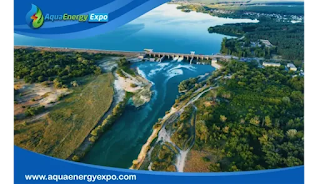Working of a Hydropower Plant
A hydropower plant generates electricity by harnessing the energy of flowing or falling water. It’s one of the most reliable and widely used forms of renewable energy in the world.
⚙️ Key Components of a Hydropower Plant
-
Dam
-
Stores a large amount of water in a reservoir and creates height (head) for potential energy.
-
-
Intake
-
Gates or valves that control the flow of water from the reservoir into the system.
-
-
Penstock
-
A large pipe that carries water from the reservoir to the turbines under high pressure.
-
-
Turbine
-
Water hits the blades of the turbine, causing it to spin. This converts water’s kinetic energy into mechanical energy.
-
-
Generator
-
Connected to the turbine. As the turbine spins, the generator converts mechanical energy into electrical energy using electromagnetic induction.
-
-
Transformer
-
Increases (steps up) the voltage of electricity for transmission through power lines.
-
-
Outflow
-
Used water is released back into the river downstream through a tailrace.
-
🔄 Step-by-Step Working Process
-
Water is stored in a reservoir behind a dam.
-
When electricity is needed, intake gates open, and gravity forces water through the penstock.
-
Water flows at high speed and strikes the turbine blades, causing them to spin.
-
The turbine is connected to a generator, which converts the spinning motion into electricity.
-
The generated electricity is transmitted via transformers and power lines to homes and industries.
-
The water is then safely released back into the river.
💡 Why Hydropower Works Well
-
Renewable: Powered by the water cycle.
-
Reliable: Can quickly ramp up or down based on electricity demand.
-
Clean: Produces no direct greenhouse gas emissions.
📌 Types of Hydropower Plants
-
Impoundment (with dams and reservoirs)
-
Run-of-River (uses natural river flow, minimal storage)
-
Pumped Storage (stores energy by moving water between two reservoirs)

تعليقات
إرسال تعليق